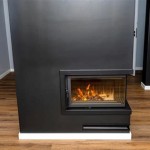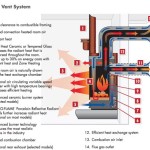Outdoor Propane Fireplaces: A Comprehensive Guide
Outdoor propane fireplaces have become increasingly popular as homeowners seek to extend their living spaces and create inviting outdoor environments. These fireplaces offer a convenient and efficient alternative to traditional wood-burning options, providing warmth, ambiance, and a focal point for outdoor gatherings. This article provides a comprehensive overview of outdoor propane fireplaces, covering their benefits, types, installation considerations, maintenance, and safety precautions.
Propane fireplaces offer significant advantages over their wood-burning counterparts. Primarily, they eliminate the need for wood storage and the associated mess of logs, kindling, and ash. The user avoids the labor-intensive process of chopping wood and maintaining a woodpile. Furthermore, propane fireplaces offer instant ignition with push-button or remote-controlled operation, providing immediate heat and flames. This ease of use makes them a practical choice for homeowners who want to enjoy a fire without the hassle.
Environmental considerations also favor propane fireplaces. They produce significantly less smoke and particulate matter than wood-burning fireplaces, contributing to cleaner air quality. While burning wood releases carbon dioxide and other harmful pollutants, propane offers a cleaner burn with reduced emissions. In areas with air quality restrictions, propane fireplaces often provide a viable alternative.
The cost-effectiveness of propane fireplaces is a factor to consider. While the initial investment may be comparable to or slightly higher than a wood-burning fireplace, the long-term operating costs can be competitive. The price of propane fluctuates, but it is typically more predictable and controllable than the cost and availability of firewood. Proper insulation and efficient fireplace designs can further optimize propane usage.
Types of Outdoor Propane Fireplaces
Outdoor propane fireplaces are available in a wide variety of styles and designs, catering to diverse aesthetic preferences and spatial constraints. These types can broadly be classified based on their installation method, design, and functionality.
Firstly, freestanding propane fireplaces offer a versatile and portable option. These units typically come pre-assembled and can be easily moved from one location to another. They are ideal for patios, decks, and smaller outdoor spaces where a permanent structure is not desired. Freestanding models often feature adjustable flame heights and heat output, allowing for customized comfort levels.
Secondly, built-in propane fireplaces are designed for permanent installation, often integrated into outdoor kitchens, retaining walls, or custom-built structures. These fireplaces require professional installation and typically involve running a gas line to the location. Built-in units offer a seamless and integrated look, enhancing the overall aesthetic of the outdoor space. They are often larger and more powerful than freestanding models, providing greater heat output and visual impact.
Thirdly, propane fire pits represent a popular type of outdoor fireplace, often featuring a circular or square design. These pits can be either freestanding or built-in, offering a social gathering point for friends and family. Fire pits are available in various materials, including stone, brick, concrete, and metal, allowing for customization to match the surrounding landscape. They may include features such as decorative glass rocks or lava rocks to enhance the visual appeal of the flames.
Beyond these broad categories, specific designs include linear fireplaces, which feature a long, narrow flame display, and tabletop fireplaces, which are smaller, portable units suitable for balconies or small patios. The choice of fireplace type depends on individual needs, budget, and design preferences.
Installation Considerations for Outdoor Propane Fireplaces
Proper installation is crucial for the safe and efficient operation of an outdoor propane fireplace. The installation process varies depending on the type of fireplace, but certain general principles apply to all installations. It is highly recommended to consult with a qualified gas technician or contractor to ensure compliance with local building codes and safety regulations.
The location of the fireplace is a primary consideration. It should be positioned away from flammable materials such as trees, shrubs, and overhanging structures. Adequate clearance should be maintained around the fireplace to prevent overheating or fire hazards. The area should be level and stable to ensure proper support for the unit.
Connecting the fireplace to a propane source requires careful attention. If connecting to a portable propane tank, ensure the tank is placed on a level surface and is easily accessible for refills. If connecting to a natural gas line, a professional gas technician must install a regulator and appropriate fittings to ensure proper gas pressure. All gas connections should be tested for leaks using a soapy water solution.
Ventilation is a critical aspect of propane fireplace installation. While propane fireplaces produce less carbon monoxide than wood-burning fireplaces, adequate ventilation is still necessary to prevent the buildup of harmful gases. Follow the manufacturer's guidelines for ventilation requirements, and ensure the fireplace is not installed in an enclosed or poorly ventilated area.
For built-in fireplaces, the installation process may involve constructing a framework of non-combustible materials such as concrete blocks or steel studs. The fireplace insert is then installed within the framework and connected to the gas line. Proper insulation and weatherproofing are essential to protect the fireplace from the elements.
After installation, thoroughly test the fireplace to ensure it is operating correctly. Check the flame height, heat output, and overall functionality. Address any issues or concerns before using the fireplace regularly.
Maintenance and Safety of Outdoor Propane Fireplaces
Regular maintenance is essential for ensuring the longevity and safety of an outdoor propane fireplace. Proper maintenance includes cleaning, inspection, and occasional repairs. Following the manufacturer's instructions for maintenance is crucial.
Cleaning the fireplace regularly helps to prevent the buildup of dirt, dust, and debris. Use a soft brush or cloth to clean the exterior surfaces of the fireplace. Remove any accumulated debris from the burner area and ventilation openings. Inspect the gas lines and connections for leaks or damage. Replace any damaged parts promptly.
Inspecting the propane tank or gas line is also important. Check the tank for leaks, rust, or damage. Ensure the gas line is securely connected and free from cracks or wear. Replace the propane tank if it is nearing its expiration date. Consider installing a propane tank monitor to track the propane level and avoid unexpected outages.
Safety precautions are paramount when using an outdoor propane fireplace. Never leave the fireplace unattended while it is burning. Keep children and pets away from the fireplace to prevent burns or injuries. Ensure a fire extinguisher is readily available in case of emergencies. Never use flammable liquids to ignite the fireplace. Allow the fireplace to cool completely before covering it or storing it.
Carbon monoxide detectors should be installed in nearby structures to provide early warning of any potential gas leaks. Regularly test the carbon monoxide detectors to ensure they are functioning properly. If you suspect a gas leak, immediately evacuate the area and contact a qualified gas technician.
Properly store propane tanks when they are not in use. Store them in a well-ventilated area away from heat sources and open flames. Secure the tanks to prevent them from tipping over. Follow local regulations for the storage and disposal of propane tanks.
By adhering to these maintenance and safety guidelines, homeowners can enjoy the warmth and ambiance of their outdoor propane fireplace safely and reliably for many years to come.

Sedona Outdoor Fireplace Round Propane Natural Gas Fire Table

Cal Flame 78 In Stone Veneer And Tile Propane Gas Outdoor Fireplace 22 Frp908 3 Rk The Home Depot

Allen Roth 40000 Btu Black Steel Liquid Propane Outdoor Fireplace At Com

Propane Fire Pits Why You Might Want One Pgagnon

Nuu Garden 30 In Square Outdoor Propane Gas Fire Pit Table With 50000 Btu Af006 01 The Home Depot

Paramount Propane 47 25 In Broe Outdoor Fireplace Fp 285 Réno Dépôt

Outdoor Propane Wood Burning Fireplaces Real Flame

12 Best Propane Fire Pits Of 2024 Top Picks

Outdoor Propane Wood Burning Fireplaces Real Flame

Allen Roth Outdoor Fireplaces At Com
Related Posts








